There’s a subtle implication in the term “creative placemaking,” namely that it involves creating a sense of “place” where none existed prior. Each year, communities invest millions of dollars into such initiatives, constructing large cultural venues or bringing in notable artists and experts to help spur revitalization. But do these communities really lack a sense of place? How do longtime residents of these neighborhoods feel about that?
In June of 2021, I sat down and discussed those questions with Douglas Farrand and Margaux Simmons, two of the lead organizers for the Music City program in Orange, New Jersey, a grassroots asset-based community development initiative that uses music-making as a tool for connection, civic engagement, and creative placekeeping, which is defined by the U.S Department of Arts and Culture as “…the active care and maintenance of a place and its social fabric by the people who live and work there. It is not just preserving buildings but keeping the cultural memories associated with a locale alive, while supporting the ability of local people to maintain their way of life as they choose.”
At the time of this recording, cases of the Delta variant finally seemed to be under control, and the Omicron variant had not yet emerged. Amidst the pandemic, organizers from the Music City program came up with some creative ways to continue arts programming in spite of the pandemic, largely relying on community networks instead of large arts institutions. Music City is run by the University of Orange, a nonprofit community organization focused on restoration urbanism, which acknowledges that policies and planning decisions rooted in segregation have left cities physically and socially fractured. It also emphasizes the need for reweaving the social fabric and reconnecting physical spaces in the fight for equity.
This interview has been edited for clarity.
Brandon Duong: My first question was how this whole thing started.
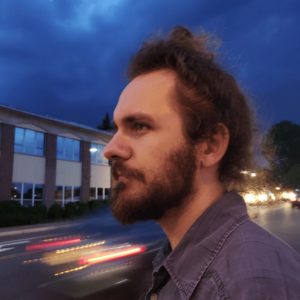
Douglas Farrand, a co-organizer of Music City.
Douglas Farrand: There’s really a core of four of us who are behind Music City. There’s Margaux [Simmons] and I, and then two lead organizers with Music City: Ray Sykes, who’s a hip-hop musician and producer from Orange, and Cesar Presa, who’s from Uruguay originally. He’s a guitarist and bassist and does a good chunk of music production, too. The four of us really got to know each other through a youth arts collective called ORNG Ink that was adjacent to University of Orange for many years. The four of us recognized that each of us had been working with music and the city for some time, but [with] very different music [in] very different ways. Margaux had been teaching these free community music theory classes for some years; I’ve been running a music education program in the after-school space of Oakwood Avenue Community School; Ray had a music studio, and he has this practice that he talks about keeping an ear to the streets. He made sure that his studio was open to young people in the city to come in and record and practice. He’d also host hip-hop open mics throughout the year and was really committed to having spaces where young hip-hop artists, young rap artists could come and practice. So this idea of recognizing these abundant assets and resources—music in the community—really came from the four of us having these different practices and different experiences working with music in Orange over the years, and starting to explore the ways in which we could work together to bridge connections between very siloed communities.
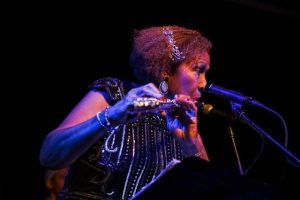
Margaux Simmons, a co-organizer of Music City.
Margaux Simmons: We’ve created Music City to involve classes, workshops, concert series, and an instrumental rental library that we’re building so that there can be instruments for people who would like to study them. The rentals [are available for a] very low cost for community members who want to do that. Our aim is to create a multigenerational musical community. Classes are open to people of all ages. There’s schoolchildren that perform as well as the established members of the community. We work with all ranges of abilities in the music. We don’t make a distinction between amateur and professional; we work to create a democratic music community. One of the aims of the University of Orange is that people learn from each other, that everyone has something that they can teach, and everyone has something that they can learn. So the real way to build the assets of a community is people learning from and teaching each other.
‘the real way to build the assets of a community is people learning from and teaching each other.’
Farrand: Our very first Music City event was Dec. 1, 2016, a commemoration of Rosa Parks. It was a choir concert where we invited school choirs and church choirs to come and sing together in observance of the anniversary of Rosa Parks’ act of civil disobedience, but also [to lift] up both the feat of solidarity and organizing [that followed] her refusing to give up her bus seat that enabled the planning and implementation of a statewide bus boycott in just four days. [We also wanted to] lift up the fact that Rosa Parks didn’t just decide to do this out of nowhere. She was a student at the Highlander [Research and Education] Center, [and] she was a committed organizer and activist who was constantly learning how to do this work. And so the fact that our first event was this celebration of lifelong education, solidarity, organizing, and connection in the wake of Trump’s election, really shaped how we think about music in the context of placemaking in particular. We didn’t come from a place of, “Oh, music is cool, therefore, we should do placemaking with music.” The music was here. This program really emerges from these grassroots networks of musicians and music students and music being such a deep part of community here. By addressing this through University of Orange’s lens of restoration urbanism, we managed to avoid the ways in which creative placemaking actually can be a tool of gentrification and displacement, and anchor it in a more equitable and radical politics that emphasizes the importance of folks being able to self-determine their lives in the places that they live, and that the good of placemaking needs to be in service of folks being able to stay where they are in their homes and their communities.
This displacement of local artists in favor of larger arts institutions has been a major point of conflict in other parts of the country as well. In 2017, artists and activists in the Boyle Heights neighborhood of Los Angeles fought furiously against the openings of several high-end art galleries, which they say contributed to the erasure of the largely Latinx working-class culture. In New York City, the Chinatown Art Brigade described how a string of new art galleries helped raise rents in the area, displacing low-income businesses and tenants. It raises the question: instead of bringing in outside artists, what can communities do to support local musicians, and cultivate an environment where they can thrive?
Simmons: In October of 2020, we had the first reclaiming of public spaces. We had a festival where people played outside [of] restaurants, mutually [benefiting] musicians and restaurants. After that we asked our participants what they think would support them and help support music in the area.
One [answer was that] arts development as an asset of the community would be recognized first and foremost in schools. It’s really important that music education be strong and offered to everyone. I think that would go a long way towards supporting musicians. As a teacher of the University, I’ve encountered so many parents who are just wanting their kids to get a decent job and [who] do not want them to study music because it brings no financial remuneration. So this attitude that [the arts] is just superfluous, that you won’t ever make a living at it … to get to the root of that issue is a real concern for me. If we could work that out, and value the arts, that would be the first step.
[RELATED ARTICLE: Gentrification—Is Pop Culture Getting It Right?]
Farrand: The festival that Margaux talked about is a really good example of how our thinking has evolved on this because this is a really challenging question. Normally, one of our bigger programs is an annual citywide festival that happens in May, but obviously [in] May 2020 it was canceled. In October, we re-formed and reshaped the festival, coming from a place of concern around COVID safety. So instead of having the festival in one location, we partnered with local restaurants to host musicians, not in the restaurant, but in public space, outside or close to restaurants, outdoor seating. What came was this magical day where we had musicians playing outdoors on the sidewalk. We had a lot of conversations with musicians and organizers and restaurant owners in the aftermath of this trying to articulate what we’d experienced on that day, but also with this lens of what would a city that really support musicians and musicianship at all levels look like?
What came out of that was recognizing that the answer doesn’t lie in initiatives. Especially with regards to placemaking, it’s a very top-down orientation. Folks think about it as municipal funding being available for mural programs, but we had a lot of interesting conversations around the transient nature of sound and music in particular, and particularly in a place like Orange the way this connects to the Black radical tradition, and recognizing that actually what has worked is cultivating horizontal networks of connection between organizations, businesses, artists, really this idea of cultivating an ecosystem that is supportive of creative endeavor, much more so than trying to advocate for money.
Funding is important, of course, but it dries up very easily. It’s the first thing that gets cut when crisis hits. And also, for programs that rely too heavily on municipal support, it ends up creating very siloed situations where it’s artists or organizations that have a particular “in” with municipal institutions that end up getting all of this funding, and it doesn’t actually filter out to other communities. So what we’re working on in Orange is ways that we can connect networks of restaurant owners with business owners, with musicians, individual teachers who are aligned with this way of thinking about music, also with this network of organizations and businesses in the city. And the ways that this proliferates and generates [almost] a mutual aid.
In May [2021], we did a follow-up festival, our annual festival, where we start with this model of partnering with local restaurants and having music in the public space. And also with a goal of driving increased business to restaurants … the restaurant owners were really happy with the number of restaurants who just sold out of food during the festival, so it really was a significant increase in business for them. Since then, we’ve had a number of restaurant owners reach out being like, “Hey, can you share contact information for these musicians, we would love to hire them to play at other events at our space.” So we’re seeing the way that our programming can proliferate as a network that is self-generative, as opposed to relying too heavily on the top-down thinking exclusively about money and funding from a municipality. It’s about activating and supporting networks of connection and organizing. Our analysis is that, in the long term, this really is work about public health, about civic engagement, about educational attainment, and it’s using Music City as a community organizing strategy as much as [it’s] specifically an arts program.
I want to return to this concept brought up earlier about horizontal networking. How did you make connections between the artists and restaurants?
Farrand: We’ve been doing Music City for five-some years now. Part of it’s just recognizing the way that organic connections happen through doing this work. One example is the music festival. Margaux and I started as the two organizers of the festival the first couple years. But each year, we got a little bit of interest from a couple of the musicians that we would bring on to perform at the festival. And so maybe the third year we did the festival, all of a sudden we had a group of musicians who [were] excited to work on it with us. And that’s grown over the years. Folks come to an event, they get curious, and they get looped into this organically growing network. In terms of the connections between restaurants and musicians, this last festival, the team—which includes musicians—walked through the city as a form of preparing and designing this festival. We studied the importance of Main Street as a space of connection, vitality, and life in the city. We walked Orange’s main streets. By walking around the city, we got to stop in at these restaurants and meet with the restaurant owners. We do this work of being in the city, of walking the city, of talking with people, entering into real relationship with them, then the event itself arrives. For the music we have different groups of musicians in the same space as the restaurant owners. And it becomes this space of very fluidly being able to connect folks.
Cesar knows a Soca band and a guy who plays steel pan and so we booked that band at this place [called] Sarrah’s Cafe Trinbago, this Trinidadian cafe that we had initially met through one of our walks. We stopped in this cafe, [and] Sarrah, [the owner], was very excited to hear about the music festival and ended up giving our team free doubles [a Trinidadian fried bread stuffed with spiced chickpeas]. And she just keeps giving it to us. She loved the festival a lot. She was one of the restaurants that sold out of food on that weekend and really loved the music. And so afterwards when I went to get food there one time, I was like, Sarrah, no, please let me pay this time. And she said, “No, no, no, no, no, it’s free, as long as you give me the contact information for the guy playing steel pan.” So now they’re going to have him play on Trinidadian Independence Day at the restaurant. So there’s an organic component here that comes out of building trust and solidarity.
I want to also mention that it’s been a tough year for restaurants. We recognize where we function as a nonprofit, University of Orange. We have access to philanthropic dollars. In working on the festival, and in building relationships with restaurant owners, we’ve ended up paying for renewal permits. We actually ended up replacing, or are in the process of replacing, a restaurant’s window that’s been badly damaged for a long time and was causing them to get repeated fines from the City of Orange, [which is] not providing any resources to help this restaurant fix that window. So we’re showing up for our neighbors, we’re demonstrating and practicing solidarity, and it builds a deep trusting relationship.
Our commitment to musicians as well starts to become reciprocated by these restaurants as we enter into this meaningful partnership. There’s also a level of very intentional connection after our festival back in October. We hosted a series of story circles where we invited musicians and organizers to enter a Zoom room, where we had a facilitated conversation about what our experience of the festival was. We were quite intentional about building in these spaces of debriefing and sharing our learning more explicitly with one another, which yield[ed] a different connection, a different trust, a different commitment. There’s this idea of network as—there’s an organic component, and there’s an intentional component—but it’s about creating many opportunities for different kinds and levels of connection, some very small scale, some at a much larger scale.
What’s that process like of bringing communities together across racial and ethnic lines, keeping in mind challenges like language barriers and, like you mentioned, an atmosphere of fear and political division?
Farrand: We really root the work that we do in an understanding that the American city has been systematically and ruthlessly sorted by class and by race by decades and decades of damaging, racist, and classist urban policy that has intentionally segregated in particular low-income people of different ethnic or racial backgrounds. Age segregation is also a huge factor in this.
It’s simultaneously recognizing how intense and intentional that process has been, but also recognizing that through design, and intentional acting, we can address that. Part of our analysis of how to address that comes from Mindy Fullilove’s book Urban Alchemy. The University of Orange practices restoration urbanism, which recognizes that everything we need to address this problem of siloing and segregation is already here. What we need to address this is in residents’ lived experiences, skill sets, knowledge, [and] passions. It’s through this idea of asset-based community development, of lifting up, connecting, aligning, celebrating, and supporting the resources and assets and experiences and passions of the people that make this place, that we begin to address this.
Simmons: Music and food are two main ways that culture is expressed. They’re often ways of bringing people together. The combination of that has been very important towards the expression of our multigenerational, multiethnic community in Orange.
Farrand: That analysis of the ways that music and food work comes from this place, very specifically. It’s not some backward universal idea that we’re imposing. It’s really in response to people and place. And it’s responding to what’s already there, not trying to impose, which is where what we’re doing differs from a lot of the mainstream “creative placemaking,” which brings in a much more colonial understanding of a certain art form being good for a place for XYZ reasons. When it’s approached from that angle, it becomes just as extractive, just as colonial, and ends up being a precursor to gentrification and displacement. Without that analysis, both of history [and] of working from a place of grassroots assets, grassroots resources, lifting up what is already there—it’s a very slippery slope if you’re not operating from it.
Could you talk about that a bit more? I think that’s a very interesting idea, that differentiation you make between how creative placemaking typically is and what you’re trying to do.
Farrand: As is demonstrated by some of the language in nonprofit or philanthropic spheres, this shift in language away from the idea of “placemaking” to “placekeeping” came from recognizing that a lot of these early creative placemaking initiatives ended up, in essence, funneling little bits of resources into communities like Orange to keep places active until the conditions change, such that luxury apartment developers are now interested in these spaces. We saw this in Orange: this youth arts collective, ORNG Ink, got very quickly displaced and evicted from the space they were in as soon as the nonprofit that owned that space could bring in organizations that were going to pay more. And overnight that youth arts collective was given two weeks to move out. Two weeks later, an all-white architecture firm had taken up residency in the same building.
This is a practice that we see time and time again. And it comes back to Margaux’s point about fundamental attitudes towards the arts, where I feel like creative placemaking really sees arts as a tool to leverage, or as like a placeholder, and as soon as conditions change, those same artists are seen as completely dispensable and pushed out. It comes from a place of actually not valuing the arts, which is the same as not valuing the lives and lived experiences of a particular group of people.
So creative placemaking has always had this pernicious element of a precursor to gentrification. You can see that all around the nation. Our work here by grounding creative placemaking work in this broader analysis of restoration urbanism, which is, to put it simply, this recognition of this long history of racist and classist urban policy, but then the flip side of that being asset-based community development, and that everything that we need to solve these issues comes from the communities that live and have lived in Orange. And then restoration urbanism anchors creative placemaking, and acts as accountability.
Simmons: We use what we have here. That’s the difference between our program in Orange and other programs around the world. In looking at our Music City program, the idea that you don’t have to bring people or big names from outside and to this community to make it work, we can lift up what we have here already.
Farrand: We’ve been thinking a lot about this notion of regenerative agriculture, a practice of agriculture that returns nourishment and resources [to the earth that] is not an extractive model of agriculture. There’s a similar parallel with the cultural work we’re doing. And so to think of Music City also as a model of regenerative culture, [we focus on ways to work] with music and musicians that are centered on supporting a more rooted and regenerative form of cultural wealth production that is cycling back into the everyday life of a city.
Simmons: [We have an] emphasis on music as an everyday practice, that it belongs to everyone.
Farrand: There’s this one neighborhood in Orange called The Valley. And there’s been a big push to brand it as an arts district. But there are these institutionalized gallery spaces that have been funded under the auspices of creative placemaking. Most folks in these galleries aren’t from Orange. The conversation in these nonprofit creative placemaking spaces are about how to find local artists and bring them into these galleries, without realizing that The Valley is largely home to working-class Hispanic communities. You walk down any street on a Friday night during the summer and there are these backyard parties that are full of music and life and artistic and creative expression. This idea that somehow the goal of creative placemaking is to bring that into gallery spaces or whatever … it’s in these backyard parties, it’s in these spaces where people are making and building their own infrastructure, their own ways of living and celebrating and communing. That’s the wellspring, and any institutionalized cultural or creative work needs to be regenerative in terms of restoring and supporting the ways that people want to live their lives. And that’s the crucial distinction there.
One year after this interview, Music City is still alive and well. I caught up with Doug Farrand in early April while the organization was in the midst of planning its sixth annual music festival. There’s been a lot of change in Orange in the last year, and while the group has also run into some challenges and setbacks (four restaurants the organization worked with in the past have closed in the last couple of months), the group was able to secure permits from the city to move forward with the festival.


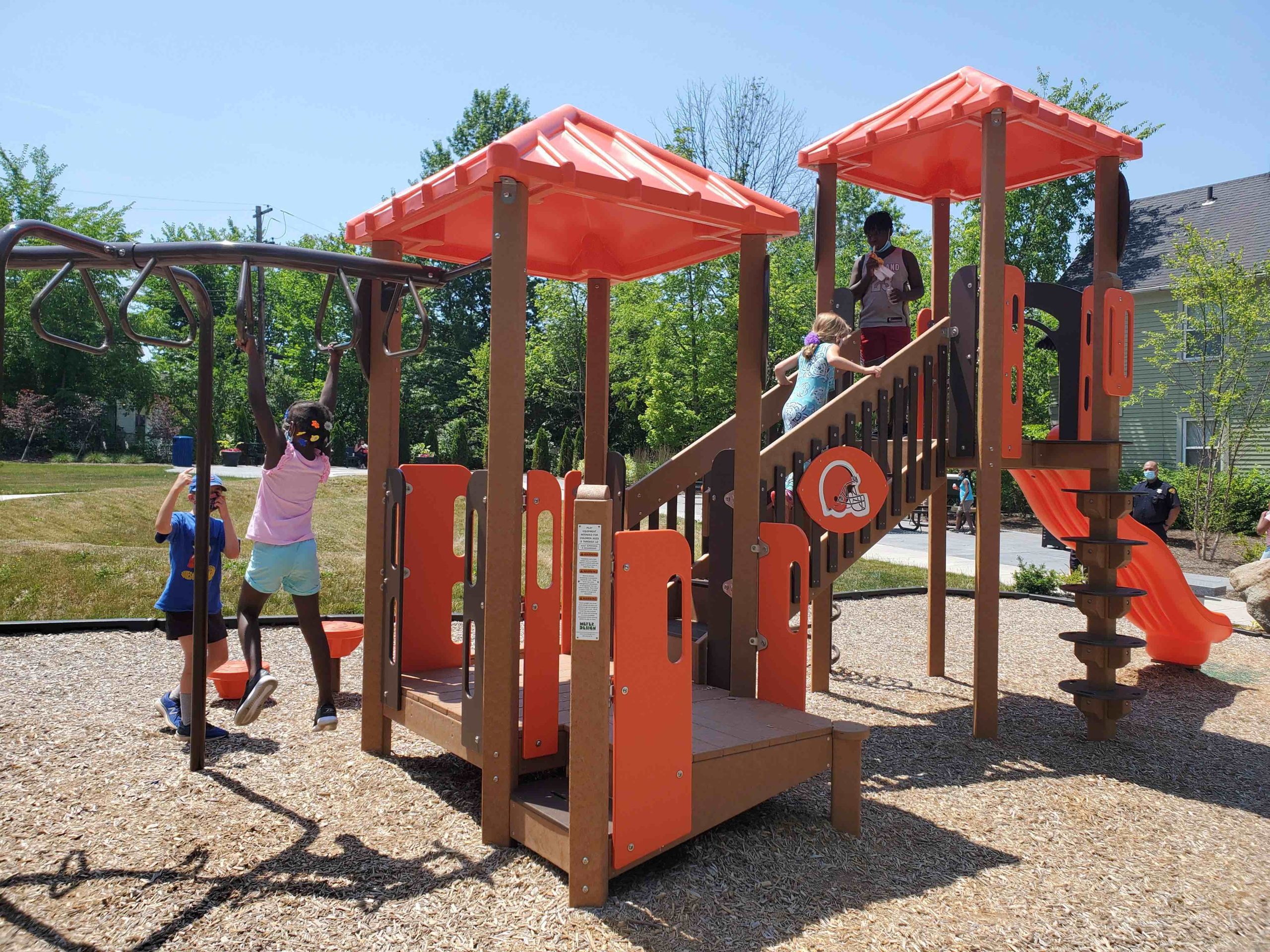
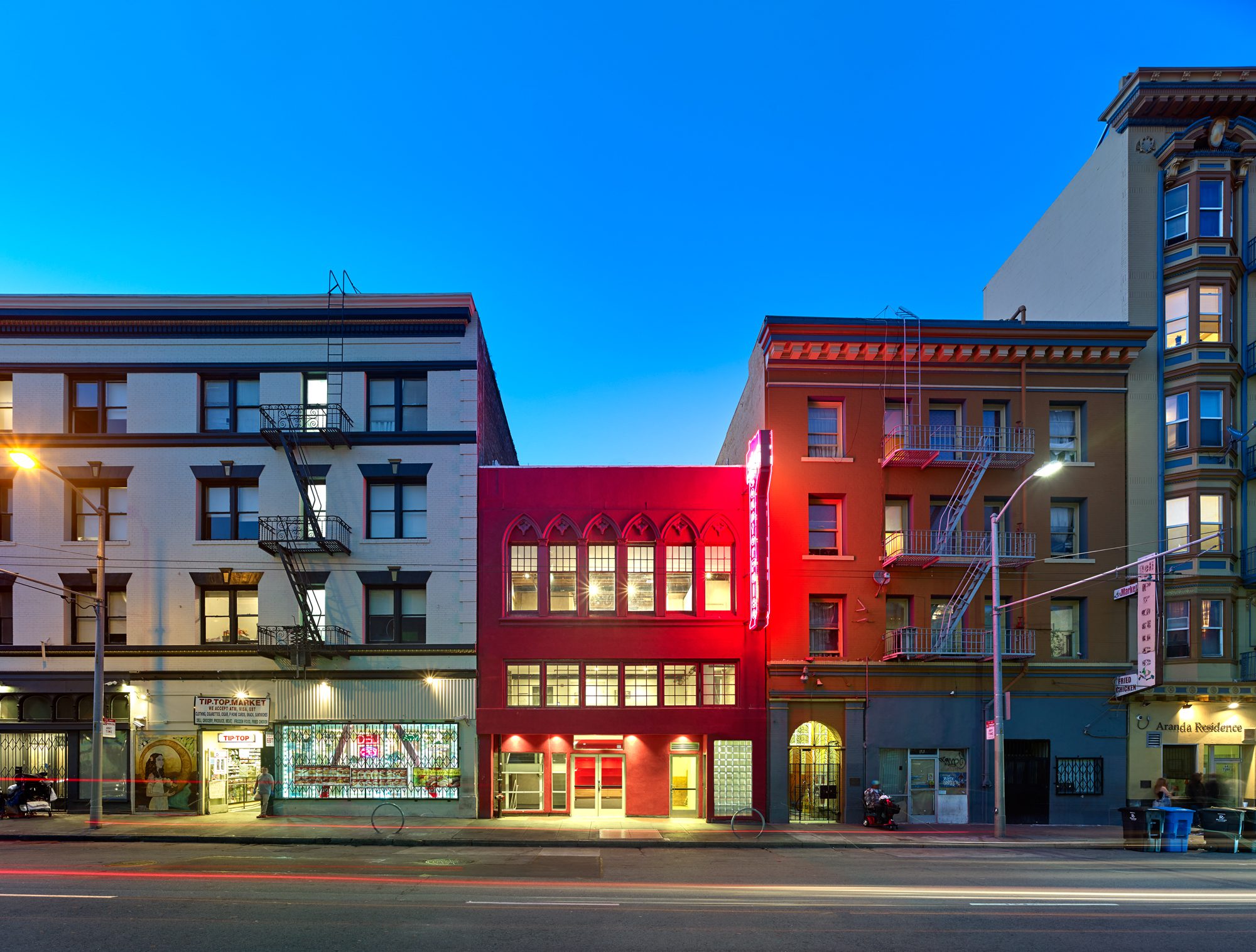
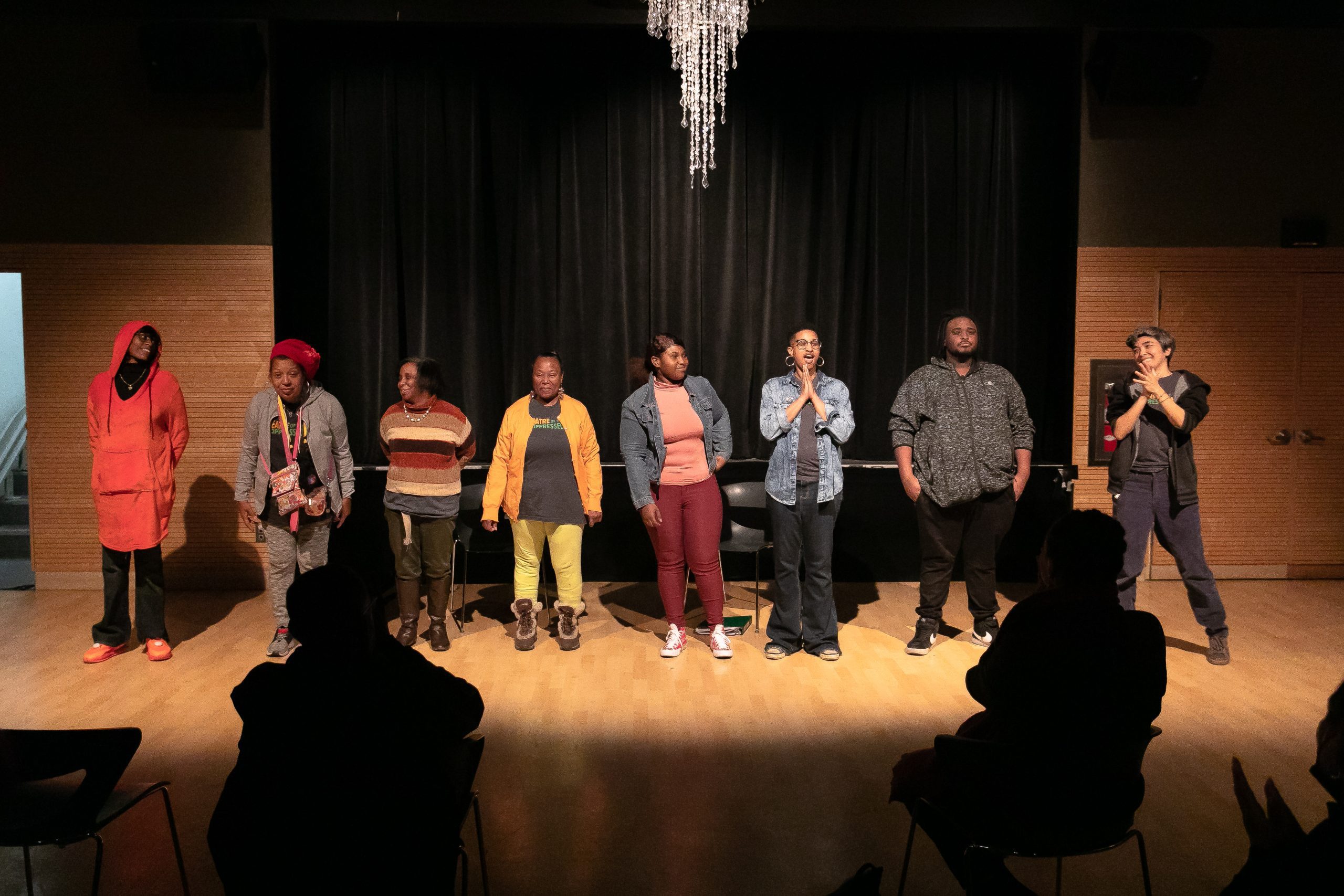
Comments